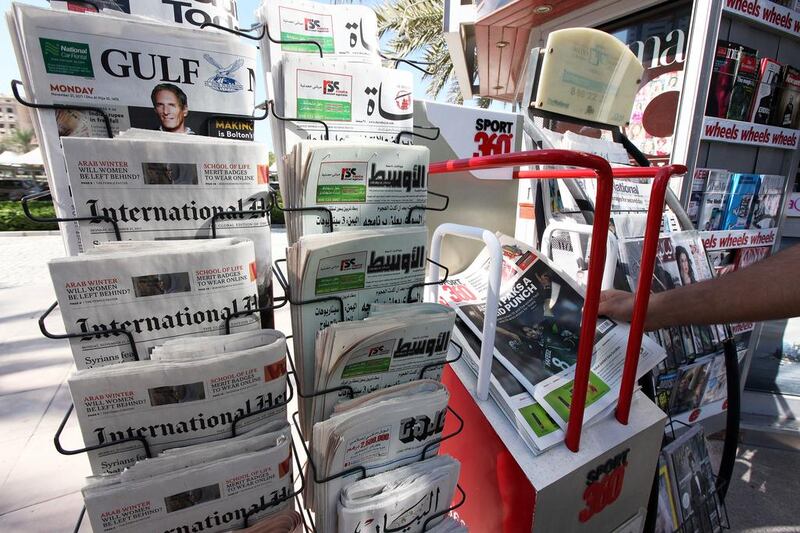Print advertising revenues will continue to slide across the Middle East over the next five years despite the popularity of newspapers in the region, a new report says.
However, the media’s total advertising revenue in the Middle East and North Africa (Mena) will rise to US$5.9 billion in 2017 from $4.5bn last year, professional services firm PricewaterhouseCoopers (PwC) forecasts.
Advertisers’ allocation of spending on print newspapers will decline to 22 per cent from 29 per cent over that period, while their expenditure on digital channels will double from today’s 9 per cent level, which closely mirrors the global trend of newspapers’ difficulties with attracting advertisers, according to PwC’s latest Global Entertainment and Media Outlook report.
Last year, regional print advertising expenditure declined to $1.3bn from $2.3bn in 2008.
But advertising expenditure on newspapers’ digital platforms is expected to rise to $120 million in 2017 from $70m last year.
Philip Shepherd, a partner at PwC’s Dubai office, said newspapers in other markets had found it challenging to shift successfully to paywalls from a free access approach and moving quickly to profit from their content.
“Also, there is much greater choice for advertisers for news sites online leading to a fragmentation of advertising spend,” he said.
Of the total internet advertising expenditure, 50 to 55 per cent will be spent on digital searches, such as Google AdWords, in the next five years, but mobile phone advertising is the fastest growing online segment, according to the report.
Online paywalls for regional newspapers were expected to be a reality in the next few years, Mr Shepherd said.
But their popularity will depend on the pricing and the timing.
Marcel Fenez, PwC’s global leader of entertainment and media research, said consumers would pay for quality “and what they want, not what we are trying to sell them”.
Television has the largest share of advertising expenditure on the media sector in the Mena region, and is expected to achieve revenues of $2.4bn in 2017, from $1.84bn last year, according to the report.
Television subscription and licence fees are also expected to grow 12.3 per cent to $13.6bn in five years.
A few years ago, television audience numbers were declining amid audience fragmentation and piracy, Mr Shepherd said.
Television has remained strong in terms of subscription numbers and advertising, according to PwC, citing the quality of today’s television programmes.
Dubai’s Orbit Showtime Network (OSN) last year reported a 30 per cent increase in Mena subscribers to 734,000 households.
Of that, 29 per cent were in the UAE. In the first nine months of the year, OSN’s revenues grew 24 per cent and its subscriber base grew 22 per cent.
Consumers are also willing to spend the most on television subscriptions and licensing fees among all media platforms, according to the PwC report.
Their television-related spending is forecast to rise 13 per cent in five years, compared with 0.8 per cent for newspapers and 1.8 per cent for consumer and educational books. Spending on consumer magazines is expected to fall by 1.5 per cent.
To suport greater advertising expenditure in the UAE on online platforms, better payment gateways, more local content and improved measurement systems for digital advertising spending are needed, according to the report.
ssahoo@thenational.ae





